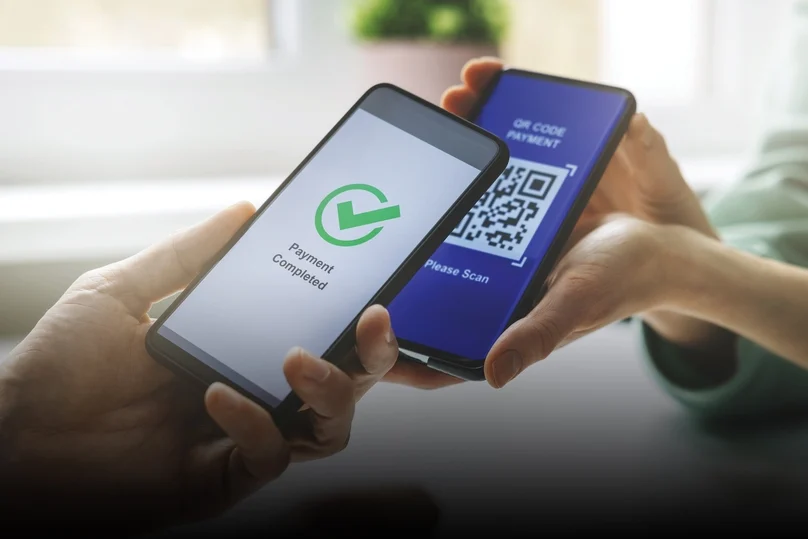
Vietnam gathers sufficient conditions to take on the current digital payment trend, which can bring about several potential implications, writes Thuy Do, country head of Global Payments Solutions, HSBC Vietnam.
At the Ministry of Information and Communications’ conference in February to announce the information and communications infrastructure masterplan in 2021-2030, with a vision to 2050, one of the masterplan’s important goals was set that 100% of the adult population in Vietnam would have smartphones by 2025.
The ambition indicates the importance of technology application in today’s world, especially in the context of the Industry 4.0. Vietnam’s current 4G network coverage rate is 99.8%, surpassing many high-income nations. Those demand and capacity are among the factors that promote Vietnam’s digitalization, impacting all aspects from administrative procedures, to shopping and payments.
Arising cashless payments
With the convenience of online shopping and digital payment solutions, consumers adopt quickly and demand for fast and safe payment methods from the payment providers.
Smartphones become true “e-wallet” to handle all kinds of transactions via integrated online banking-app or e-wallet. Cashless payment methods become common way across all consumers especially young populations via debit cards, credit cards, e-wallets, QR code or bank transfer. Cashless payment is not only applicable to restaurants or shops but also used by street vendors or shippers.
According to the State Bank of Vietnam, over 87% of the adults in Vietnam currently have bank accounts. Some banks process more than 95% of their transactions on digital platforms. During 2021-2023, both QR payments’ volume and value increased, reaching over 170%. In the first four months of 2024, cashless payments rose more than 57% by volume and nearly 40% by value year-on-year. Amongst, mobile payments went up 59% by volume and 36% by value.
Consumers’ demands have boosted businesses’ adoption of technology in connecting with banks and payment service providers, aiming to maximize buyers’ convenience with advanced experience, raising their competitiveness in the market.
HSBC’s ASEAN Business Sentiment earlier this year, gathering 600 responses from companies with annual revenues of at least $150 million in six biggest ASEAN economies: Indonesia, Malaysia, Philippines, Singapore, Thailand, and Vietnam, told us that 65% surveyed businesses in Vietnam confirmed digital payments as their focus in tech strategy or investment in 2024, the highest within ASEAN.
In terms of corporate finance, cashless payments provide several potential implications.
• Enhance efficiency: Cashless transactions can streamline financial processes, reducing the administrative burden, cost and risk associated with handling physical cash. Digital platforms can automate payment workflows, optimize cash-flow management and minimize manual errors.
• Record detailed, full and accurate data: Technologies such as application programing interfaces (APIs) help centralize data management, gain real-time visibility into financial transactions. Besides, huge amounts of data generated from cashless transactions reflect valuable insights into consumer behavior, spending patterns and market trends, supporting corporates to optimize cash allocation strategies and organizations’ growth objectives.
• Capital allocation efficiency: Digital payment platforms enable corporates to optimize working capital management, accelerate cash conversion cycles, improve forecasting and ultimately deploy surplus funds towards strategic investments. By leveraging cashless transactions, treasurers can unlock liquidity, reduce financing costs and allocate capital more efficiently to support the organization’s strategic growth goals.
Entering the new era
Banking digitization strategy has driven the industry’s digital transformation, enhanced more optimal solutions to meet corporate clients’ diversified digital payment demands, from real-time payment, to the solution that facilitates up to 24/7 electronic payment for tax/custom obligations with direct connectivity with tax/custom authorities, and omni collect solution, which offer multiple payment options in one platform.
This June, HSBC also integrates the innovative dynamic QR solution. Every of customers’ transactions will be credited directly into businesses’ HSBC accounts in real time, resulting in corporates’ liquidity improvement.
While cashless payments offer convenience, they also introduce new risk factors, such as cybersecurity threats and fraud, caused by account takeover, stolen or spoofing login information leading to unauthorized transactions and personal information leakage.
Hence, to catch up the trend while still protecting financial transactions, both consumers and corporates need to be trained to understand thoroughly the available cashless payments, their roles and meanings in finance, then selecting the most appropriate options.
In addition to strengthening cybersecurity measures and fraud detection mechanisms, adopting multi-factor authentication and encryption protocols, businesses need to periodically apply risk rating, stay updated on risks and emerging attack vectors, new regulations in digital payments such as anti-money laundering regulations and data privacy laws.
